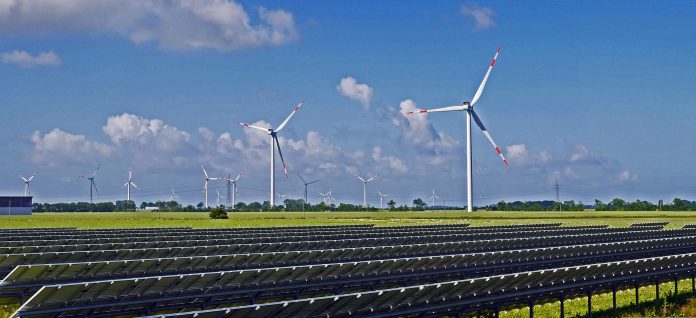The Asian Infrastructure Investment Bank has set a target of ensuring that 50% of its approved financing is directed toward climate finance by 2025, says the bank’s vice president, Sir Danny Alexander.
In January 2016, the Asian Infrastructure Investment Bank (AIIB) started operations as the first new multilateral development bank of the 21st century. Five years on, the bank has evolved from “a new kid on the block” to a thriving international financial institution working together with various institutions to meet this $1.7 trillion annual shortfall in funding for infrastructure in Asia. We have strong multilateral governance, an AAA credit rating and we maintain high international standards in our rapidly growing project portfolio. We have over $23bn of approved loans and investments in 112 projects across 28 members.
Tackling climate change and ensuring sustainable economic growth is the most pressing medium-term challenge for the sector and for humanity and will also be a major focus for AIIB over the next decade. Global efforts are very encouraging including the cooperation we have with other MDBs. Indeed, there is a global momentum in investments in low-carbon, climate resilient infrastructure, but the actual volume of investment is still well below the needs envisaged in the Paris Agreement to enable mankind to avoid irreversible catastrophic consequences due to climate change.
We are therefore encouraged to see FIDIC creating debate about mechanisms to shift capital envelopes and investment towards a more sustainable future. To play our part, AIIB has set an ambitious target of ensuring that 50% of our approved financing will be directed toward climate finance by 2025. This target is one of the most ambitious among international institutions and was agreed as part of our new Corporate Strategy “Infrastructure for Tomorrow” (I4T) that was unveiled in September 2020. I4T reflects AIIB’s firm commitment to sustainability by requiring that all investments be environmentally sustainable in terms of addressing direct and indirect impacts on the physical and biological environment such as water and air quality, biodiversity, local pollution, climate change and land and water use.
The Covid-19 pandemic has forced a rethink of investments and how we do business in the future to ensure growth, durability and sustainability. This means that incorporating environmental, social and governance (ESG) standards in business activities is now an absolute necessity. Greater and more strategic investments in the health sector are needed if we are to safeguard ourselves and our families against the next pandemic. Fortunately, MDBs, policymakers and leading thinkers recognise this urgent need and are responding to it.
AIIB understands that we can only improve our health systems by addressing climate change simultaneously. We need to probe the intricate emerging pattern of the relationship between climate and health outcomes. Left unchecked, it will exacerbate the challenges to our health, social and economic systems whose boundaries have already been overstretched by the impacts of Covid-19. At the same time if we also have to successfully overcome the infrastructure gap and reboot the globally economy, we must deploy a more innovative approach and solve all these challenges holistically. This will include using the latest technological innovations, both in terms of how we solve these challenges and the solutions we adopt and importantly, that they are environmentally and ecosystem smart.
As highlighted, however, the question that always arises is “how are we ensuring that the infrastructure we create, is actually sustainable?” The investment/maintenance ratio analysis in FIDIC’s State of the World report shows that whilst we may have improved, much more needs to be done. Technology will play a role in helping us all meet this challenge so that we shift to investing sustainably and importantly maintaining infrastructure more efficiently and cost effectively.
New technologies can also level the playing field for low-income countries – enabling them to leapfrog on their development journey – areas where our financial assistance can make a remarkable value addition to their economies in both the infrastructure and healthcare arena.
Importantly we also need to monitor and maintain the infrastructure we invest in, given our focus on sustainability and the use of artificial intelligence. AIIB is currently piloting the use of various remote sensing approaches across our diverse portfolio. Leveraging the highest commercially available satellite imagery with resolution of 30cm, we have the unprecedented ability to remotely monitor progress, evaluate change and conduct due diligence. This cost-effective approach provides us with timely updates from our projects at a fraction of the cost and carbon footprint, compared with traditional field missions. We are also looking into the wider use of unmanned aerial vehicles, or drones, to see beyond what is visible to the naked eye.
Cutting-edge technologies, such as LiDAR, enable quick and cost-effective analysis of infrastructure quality. As the youngest MDB, we are committed to continuous innovation and improvement and we are excited about using artificial intelligence to turn information into knowledge. We expect that these innovative solutions will contribute to our lean, clean and green commitment to building I4T.
The way forward is green infrastructure with sustainability, innovation and connectivity – all intricately intertwined at its core. AIIB is glad to work with organisations such as FIDIC and will continue to be at the forefront unlocking new capital, new technologies and new ways to address climate change and connect Asia with the rest of the world.
Danny Alexander is the vice president and corporate secretary of the Asian Infrastructure Investment Bank and was writing in FIDIC’s recently launched State of the World report.
Click below to download FIDIC’s first 2021 State of the World report, Time to $Tn-vest.


















